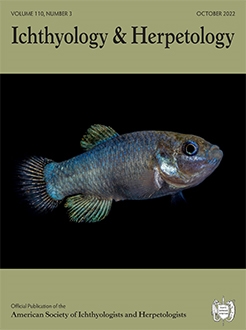In the present report, I evaluate life history and demography for two populations of the Black-bellied Salamander, Desmognathus quadramaculatus, in the Cowee and Nantahala Mountains, North Carolina, using published data on growth of females, fecundity, and larval growth and development to generate life tables and metabolic life histories for each population. I assumed that females in these populations reproduce biennially, beginning at ages 7–8 years and 8–10 years in Cowee and Nantahala populations, respectively. In deriving life tables, I posited stationary populations wherein net reproductive rate (R0) equaled 1.0 and population growth rate (r) equaled 0. Fecundity (mx column of the life table) was based on counts of ovarian follicles in gravid females. Survival values (lx column of the life table) were generated by an iterative process that yielded a value of R0 = 1.0. I projected the life spans in each population to 25 years. The demographic models developed by the procedure allowed comparison with those reported earlier for D. monticola and D. ocoee. Age at first reproduction and generation time are key contributors to variation in body size and life history in Desmognathus.
How to translate text using browser tools
10 August 2022
A Female-Centered Evaluation of Growth, Survival, Reproduction, and Demography in the Salamander Desmognathus quadramaculatus
Richard C. Bruce
ACCESS THE FULL ARTICLE

Ichthyology & Herpetology
Vol. 110 • No. 3
October 2022
Vol. 110 • No. 3
October 2022




